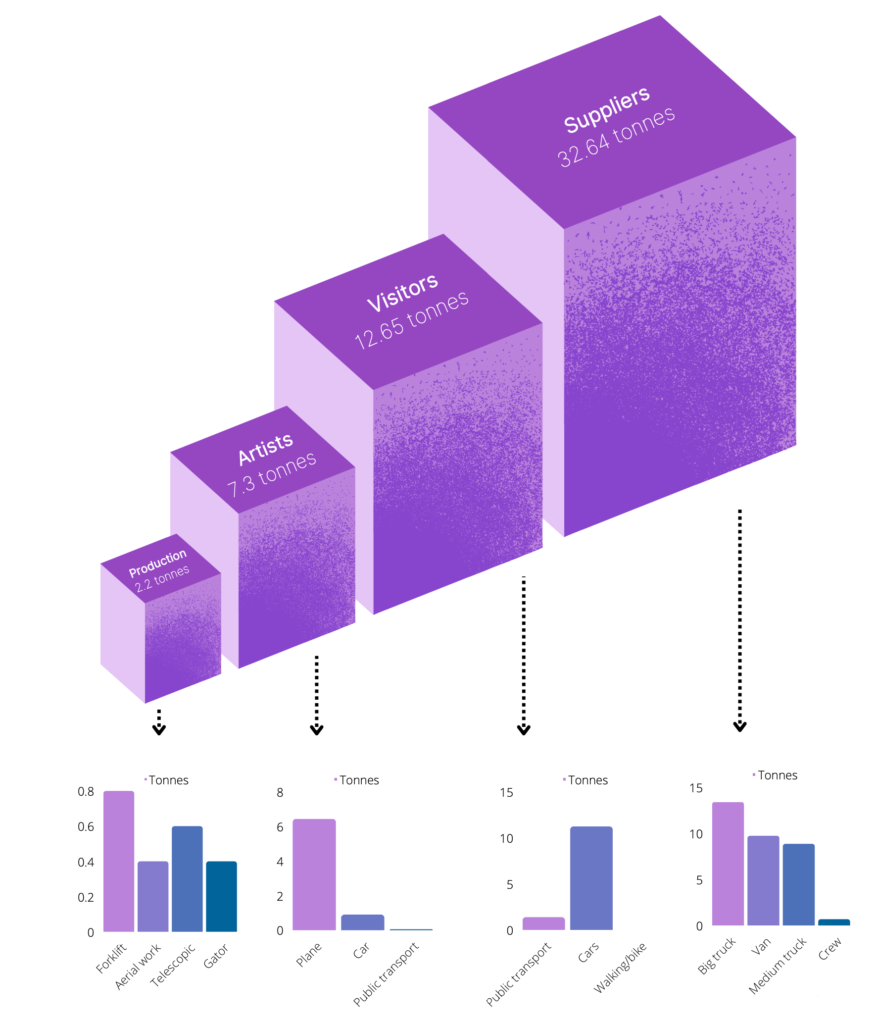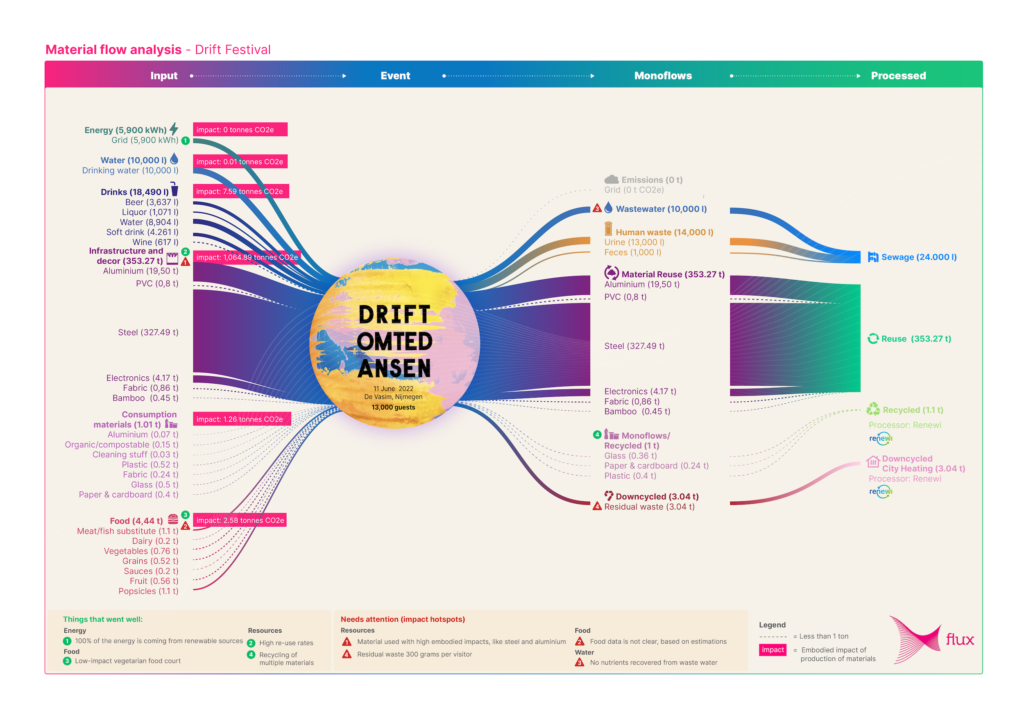About Drift
Drift inspires people by connecting them with unforgettable moments. Since 2002, Drift has been creating temporary worlds that revolve around discovery and release. Interdisciplinary events where we experiment together, make new friends, develop ourselves, feel safe, and dance until the night falls or the morning brings us back home.
Drift Festival has been actively working for a number of years to tighten up its sustainability policy, in which circularity plays a role. The need for the energy transition and the use of sustainable materials also affects the festival world. These trends do not only apply to relationships with partners and suppliers, the average festival visitor increasingly expects the hosting festival organization to pay attention to environmental issues. Within the organization, there is time and space for this and that is why the theme of sustainability is gradually becoming a priority.
Goal 1: No waste
If materials are purchased for Drift Festival, they can also be used at Studio Linksvoor’s other festivals. As a result, Drift creates a working atmosphere in which the single use of materials is prevented and the sustainability of materials is promoted. In addition, an effort is made to bind as many local suppliers as possible to ensure that the rented materials have to travel as short as possible.
Goal 2: All energy is coming from renewable energy sources
Making our energy systems fossil-free is crucial to achieving our circular and climate-neutral goals.
Goal 3: Eliminate green house gas emissions from travel & transport
There are many movements that come with a festival. Thousands of visitors come to the site, but also many suppliers. In addition, there are many movements on the festival site itself during construction and during the show. Almost all of these movements are at the expense of fossil fuels and generate CO2 emissions. That is why it is important to map out all mobility and manage it where possible.
Goal 4: Natural resources are used responsibly, food waste is prevented
The food we consume causes serious damage to the environment. This happens, for example, due to the various greenhouse gases that are emitted during production. In addition, a large part of the available land and water is also used for food production. The food we produce must therefore be treated responsibly and waste must be avoided at all costs.
Glimpse of the deliverables


